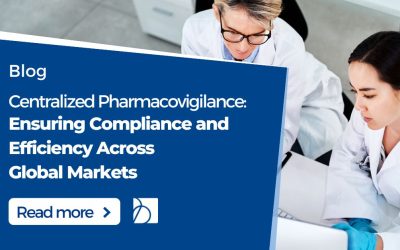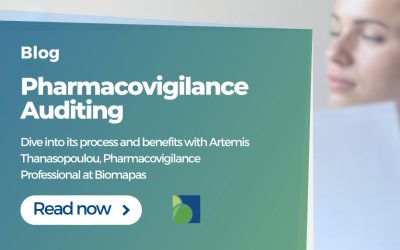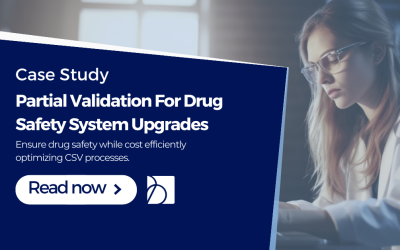European Medicines Agency (EMA) and Food and Drug Administration (FDA) are regulatory bodies working in Europe and the United States of America, respectively, with their own approached to risk management procedures. They both aim to promote and protect public health and ensure compliance with high standards in medicinal products’ safety, efficacy and quality. Both organizations continuously cooperate in scientific and regulatory fields, aligning their efforts.
It is common knowledge that most requirements are harmonized across the European and US markets with guidance from The International Council for Harmonisation of Technical Requirements for Pharmaceuticals for Human Use (ICH). However, both EMA and FDA organizations have their differences.
- EMA is involved in medicinal products and medical devices.
- The FDA regulates drugs, foods, cosmetics, biologics and medical devices.
Additionally, FDA is a centralized body that oversees the drug development process in a single country, whereas EMA coordinates centralized procedures and national competent authorities in various member states. It also means that national laws and regulations may apply at the country level in the EU. All these high-level differences also affect risk management procedures.
In this article, we will discuss the following:
- FDA and EMA risk management approaches
- Risk Evaluation and Mitigation Strategy (REMS) overview
- Risk Management Plan (RMP) overview
- Differences in FDA and EMA risk management
FDA and EMA Risk Management approaches
The main difference in risk management approaches is that FDA has established their Risk Evaluation and Mitigation Strategies (REMS), whereas EMA requires Risk Management Plan (RMP). Both REMS and RMPs provide guidance to identify and minimize the risks, but they differ on specific elements, which we discuss below.
Risk Evaluation and Mitigation Strategy (REMS) overview
A Risk Evaluation and Mitigation Strategy (REMS) is a drug safety program that the FDA requires for certain medications to ensure that the medicine’s benefits outweigh its risks. FDA designed REMS to reinforce the safe use of drugs through patient behaviour and action patterns.
FDA did not design REMS to mitigate all the adverse events a medication may have. These are shared with the healthcare providers in the medication’s prescribing information. The REMS focus on preventing, monitoring, and managing a specific serious risk by informing, educating, and/or reinforcing actions to reduce the frequency and/or severity of the adverse events.
FDA can request a REMS at any point during a product life cycle. The requirement applies to all new drug applications, abbreviated new drug applications, and biologics license applications.
he REMS program aims to manage known or potentially serious risks. It also is updated during the lifecycle of the product. Components for a specific REMS program vary according to the severity of identified risks, the population likely to be exposed, and other factors.
Additional components can include highlighted information for prescribers, a medication guide, a patient information sheet, training of health care professionals and other elements to ensure the safe use of medication. Here are some examples of elements that help to ensure safe use:
- The drugs can be dispensed only by pharmacies or other healthcare settings that are specially certified.
- And the drugs are dispensed only when there is evidence of safe-use conditions and patient monitoring, either individually or by enrolment in a registry.
Risk Management Plan (RMP) overview
In the European Union, organizations must submit a Risk Management Plan (RMP) to the EMA agency when submitting applications for new medicinal products, even if no additional measures are required. EMA authorizes new medicinal products based on the fact that at the time of the authorization, the medicine’s risk-benefit balance is judged positive for the target population in the specified indication(s).
The Risk Management Plan is a dynamic document that the company will update throughout the lifecycle of its product. It includes additional safety concerns where required and removal or reclassification of safety concerns as the medicine’s safety profile is further characterized.
Elements of RMP include a Summary of the following:
- Important Identified Risks
- Important Potential Risks
- Missing information.
These elements serve as a base for an action plan for pharmacovigilance and risk minimization activities.
Pharmacovigilance activities focus on practices and action plans exploring specific safety concerns based on specifications. And risk minimization activities define appropriate measures to minimize the known risks and monitor the success of those measures. Pharmacovigilance activities include routine and additional activities.
For most medicines, routine risk minimization is considered sufficient and includes tools such as:
- Summary of Product Characteristics
- Patient Information Leaflet
- Labelling and packaging of the medicine
- Legal status (prescribing medicine, restricted medical prescription, OTC etc.).
Additional risk minimization activities apply to some new medicines or to older products where a safety issue has been identified to improve the benefit/risk profile. Examples of additional risk minimization activities include:
- Educational programs (for Healthcare Professionals, patients, and caregivers)
- Dear Healthcare Professional Communication
- Pregnancy Prevention Programs
- Controlled Access Programs
- Controlled Distribution System.
Differences in FDA and EMA Risk Management
The table below shows you the main differences between Risk Evaluation and Mitigation Strategies (REMS) and Risk Management Plans (RMP).
| FDA. Risk Evaluation and Mitigation Strategies (REMS) |
EMA. Risk Management Plan (RMP) |
| REMS apply only to specific medicinal products with serious safety concerns identified. |
RMPs apply to all new medicinal products. |
| In REMS, minimization of risks concerns specific identified risks during the product’s lifecycle. |
RMPs’ minimization of risks is based on the overall safety profile assessment during the product’s lifecycle. |
|
The main components of REMS are:
- Medication guide
- Communication plan
- Elements to ensure safe use (ETESU)
|
The main components of RMPs are:
- Safety Specification
- Pharmacovigilance Plan
- Risk Minimization Plan
|
| REMS don’t vary in different states as the FDA is a centralized body overseeing drug development in a single country. |
The EU national competent authorities can request an adjusted EMA RMP that would align with local member states’ requirements. |
To sum up, both FDA and EMA have the same goal: to ensure compliance with medication’s safety, efficacy and quality, thus protecting public health. Their risk management procedures differ in some points, as FDA oversees the whole country with no local state having separate regulations. In contrast, a member state in the EU can cooperate with the EMA regarding particular local regulations.
The main difference in their risk management approaches is their procedures and specific elements. FDA works with Risk Evaluation and Mitigation Strategies (REMS), and EMA works with Risk Management Plans (RMP). However, their goals remain the same – to identify and minimize the risks.












